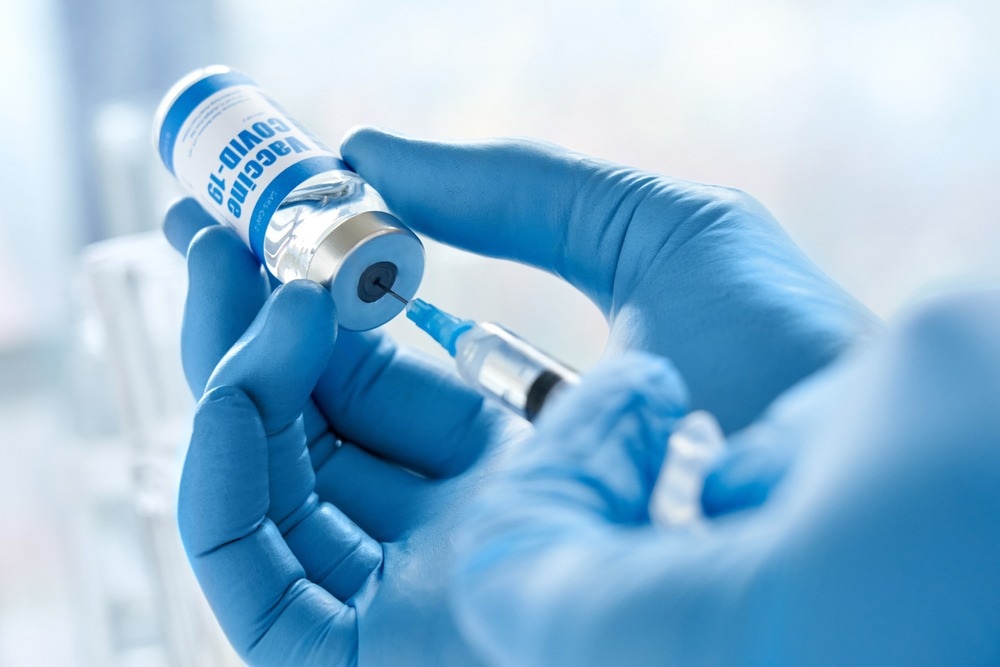Home » Health News »
Do pre-existing antibodies alter the development of memory B cells in response to SARS-CoV-2 mRNA vaccination in humans?
In a recent study posted to the medRxiv* preprint server, researchers explored how passive administration of monoclonal antibodies (mAbs) impact the development of immunological memory in response to coronavirus disease 2019 (COVID-19) vaccination.

Background
The first-ever study demonstrating the inhibition of humoral immune response by antibodies dates back to 1909. In this study, Theobald Smith showed that passive administration of surplus anti-Diphtheria toxin in guinea pigs inhibited immune responses. Further studies also documented antibody-mediated suppression or enhancement of humoral immunity. However, studies have not comprehensively explored how pre-existing antibodies might impact the consequent development of memory B cells responsible for immunological memory in humans.
About the study
In the present study, researchers enrolled a cohort of 18 healthy individuals who first received a single dose of the combination of two anti-severe acute respiratory syndrome coronavirus 2 (SARS-CoV-2) mAbs, C144-LS, and C135-LS; later, received two doses of a messenger ribonucleic acid (mRNA) vaccine.
The study participants received a single dose of C144-LS and C135-LS immunoglobulin (Ig)G1 antibodies in a 1:1 ratio during the phase I clinical trial at the Rockefeller University Hospital in New York, United States. Starting with 100mg (administered subcutaneously (s.c.)), the researchers increased the dose up to 15 mg/kg intravenously (i.v.). They used mass spectrometry (MS/MS) to assess the pharmacokinetic (PK) properties of the infused mAbs in all the study participants. Subsequently, all 18 participants received two doses of SARS-CoV-2 mRNA vaccination at a median of 82 and 103 days. The plasma levels of C144-LS and C135-LS were between five and 100 µg/ml across different study groups (low to high dose recipients).
The researchers compared the immune responses between the 18 study participants and a control group of 31 randomly selected mRNA vaccinees with no prior history of SARS-CoV-2 infection. Further, they used flow cytometry (FC) to enumerate and purify circulating memory B cells elicited in response to vaccination. Lastly, the team examined 353 and 856 paired antibody sequences from mAb recipients and controls.
Study findings
The mAbs, C144-LS, and C135-LS bind class II and III epitopes on the receptor binding domain (RBD) of the SARS-CoV-2 spike (S) protein and neutralize the virus with a 50% inhibitory dose (IC50) of 2.55 and 2.98 ng/ml, respectively.
The authors sampled the study and control cohorts between 13 to 28 and 15 to 91 days after their first and second vaccine doses. None in the study cohort seroconverted to SARS-CoV-2 nucleocapsid (N) protein and remained infection naïve throughout the study duration, as assessed by an enzyme-linked immunosorbent assay (ELISA). The individuals in both cohorts also had almost similar demographics.
High circulating levels of C144-LS and C135-LS did not interfere with IgM anti-RBD antibody responses and only had a minimal effect on IgG responses. Clearly, the infused mAbs did not measurably interfere with its overall ability to produce an immune response. Further, all the mAb recipients initially had high levels of serum neutralizing activity. Also, they developed neutralizing antibodies that were insensitive to RBD mutations in the C144/C135 target sites after vaccination.
Subsequent mRNA vaccination elicited robust RBD-specific memory B cell responses in mAb recipients, approximately four- and three-fold higher than in controls after the first and second vaccine doses, respectively. Contrary to the observations with controls, nearly 65% of the RBD-specific memory B cells from mAb recipients were cell surface IgM+ after the first vaccine dose, which decreased only slightly to 54% after the second vaccine dose. Notably, IgM-expressing memory B cells develop by a germinal center (GC) independent pathway. Most likely pre-existing IgG-expressing RBD-specific memory cell pool altered the immune response to SARS-CoV-2 mRNA vaccination to favor the development of IgM-expressing memory B cells.
By examining the paired antibody sequences of mAb recipients and controls, the authors yet again noted that IgM- and IgG-expressing B cells in vaccinated individuals who had received C144-LS and C135-LS carried normal numbers of somatic mutations. However, the relative ratio of IgM: IgG memory B cells in mAb recipients had reversed.
Apparently, C144-LS and C135-LS form immune complexes with the vaccine antigen in vivo and present it as a multimer that could increase the apparent affinity of a B cell for the multimerized antigen by avidity effects. Accordingly, the researchers demonstrated that most of the anti-RBD antibodies isolated from mAb recipients (92%) bound the multimerized antigen. Biolayer interferometry (BLI) experiments also showed a significant shift in the distribution of epitopes targeted by memory antibodies isolated from mAb recipients compared to controls.
Conclusions
Pre-existing antibodies influence the development of immunological memory following vaccination. Although their diversification increases the breadth of the COVID-19 vaccine, it shifts it away from broadly neutralizing to strain-specific epitopes. Conversely, low-affinity polyclonal antibodies emerging after primary vaccination enhance booster responses. However, studies have not yet elucidated the mechanisms governing these altered humoral immune responses.
*Important notice
medRxiv publishes preliminary scientific reports that are not peer-reviewed and, therefore, should not be regarded as conclusive, guide clinical practice/health-related behavior, or treated as established information.
- Schaefer-Babajew, D. et al. (2022) "Antibody feedback regulation of memory B cell development in SARS-CoV-2 mRNA vaccination". medRxiv. doi: 10.1101/2022.08.05.22278483. https://www.medrxiv.org/content/10.1101/2022.08.05.22278483v1
Posted in: Medical Science News | Medical Research News | Disease/Infection News
Tags: Antibodies, Antibody, Antigen, Assay, B Cell, Cell, Cell Development, Clinical Trial, Coronavirus, Coronavirus Disease COVID-19, covid-19, Cytometry, Diphtheria, ELISA, Enzyme, Flow Cytometry, Hospital, Immune Response, immunity, Immunoglobulin, in vivo, Mass Spectrometry, Protein, Receptor, Respiratory, Ribonucleic Acid, SARS, SARS-CoV-2, Severe Acute Respiratory, Severe Acute Respiratory Syndrome, Spectrometry, Syndrome, Toxin, Vaccine, Virus

Written by
Neha Mathur
Neha is a digital marketing professional based in Gurugram, India. She has a Master’s degree from the University of Rajasthan with a specialization in Biotechnology in 2008. She has experience in pre-clinical research as part of her research project in The Department of Toxicology at the prestigious Central Drug Research Institute (CDRI), Lucknow, India. She also holds a certification in C++ programming.
Source: Read Full Article



